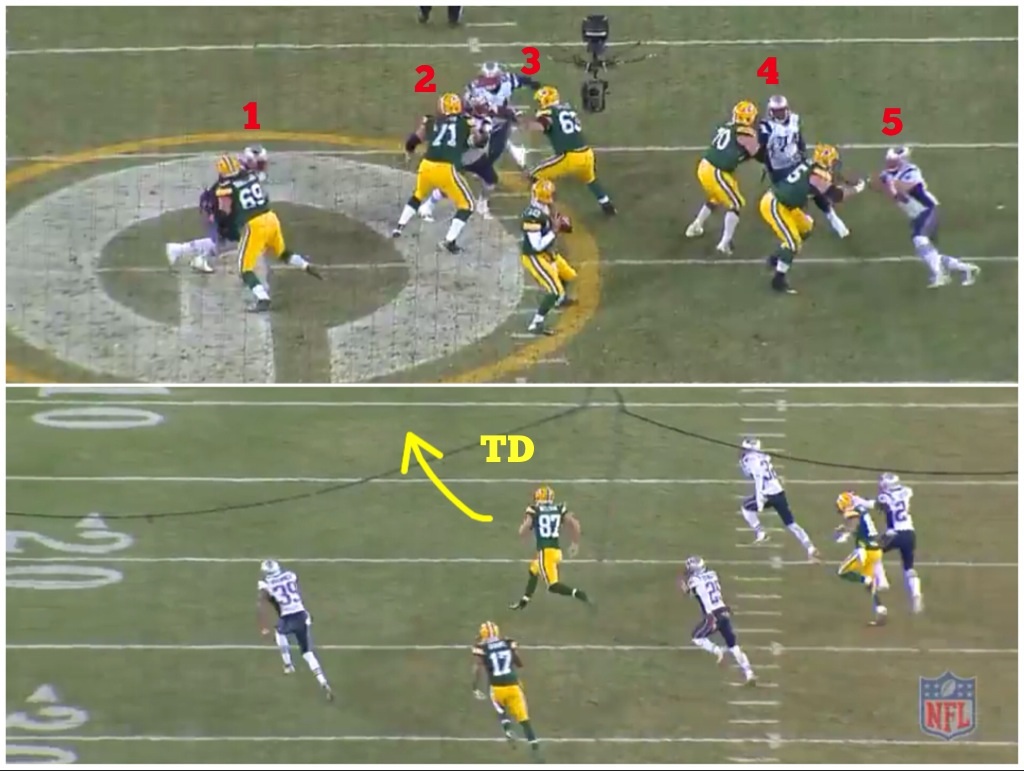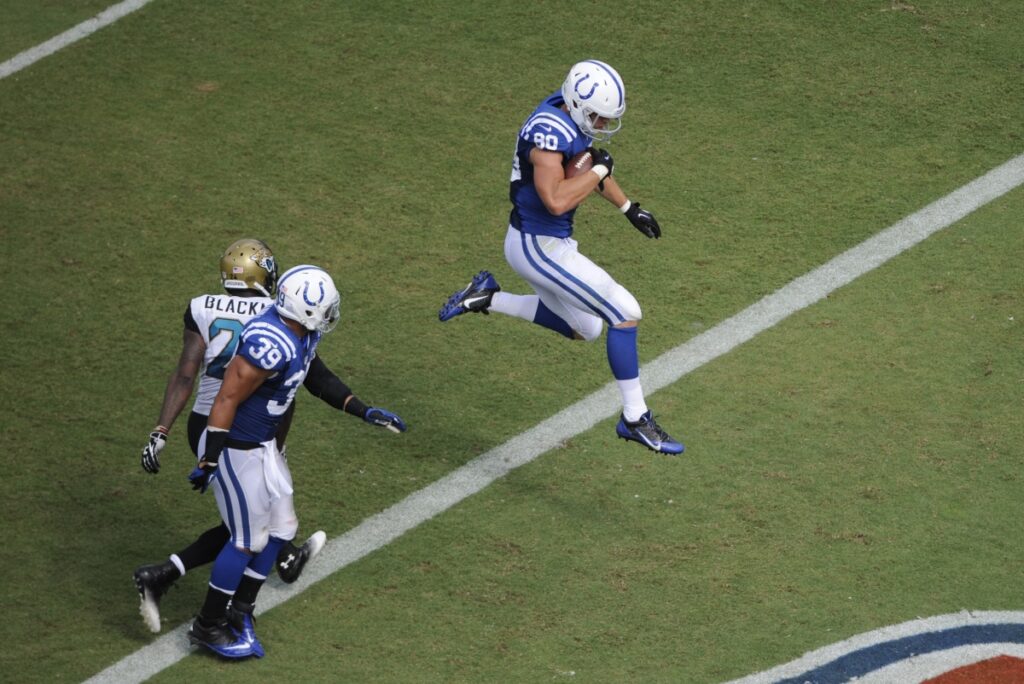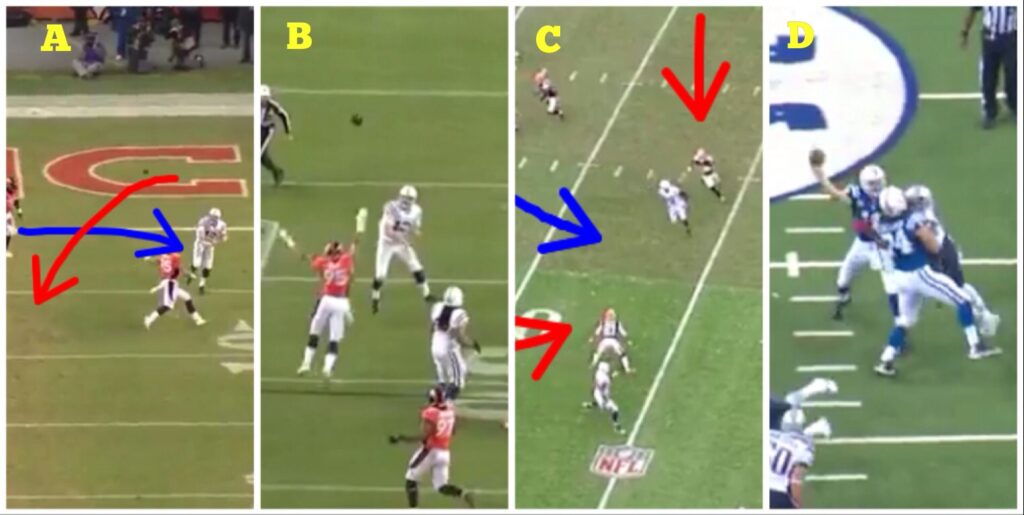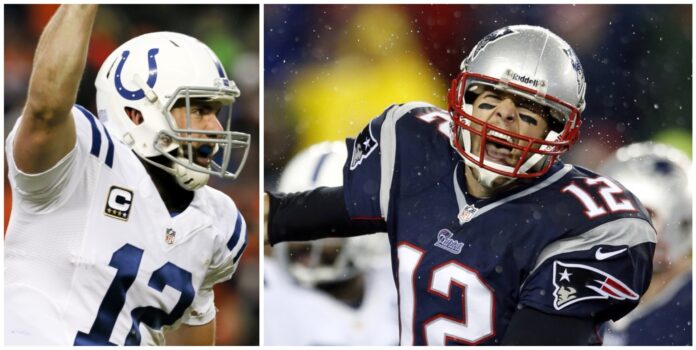Only Way Colts Upset Patriots is for Andrew Luck to Emulate the Best
“Here’s a familiar refrain: Andrew Luck, the quarterback for the Indianapolis Colts, is not just talented but exceptionally so. His upcoming opponents, including the New England Patriots, have showered him with praise, extolling his abilities in every facet of the game. Bill Belichick, the head coach of the Patriots, went above and beyond in his admiration for Luck. Throughout the week, he couldn’t help but emphasize his immense respect for this formidable adversary.”
Over the years, I’ve revisited this narrative numerous times.
Despite the persistent complaints about Belichick’s guardedness in public discourse, there’s still a wealth of insight to extract from his remarks regarding his team’s condition and what he deems crucial in evaluating opponents.
This week’s commentary, in particular, stood out as remarkably illuminating, shedding light on how the Patriots are likely to strategize against the Colts.
It wasn’t a revelation or a ‘gotcha’ moment from Belichick; instead, it was a straightforward evaluation of the Colts that leads me to believe the Patriots won’t veer drastically from their current defensive approach.
It won’t be due to defensive lapses for Andrew Luck and the Colt’s offense to surpass the Patriots’ defense in Foxboro. L
Luck will have to orchestrate a flawless game—a type of performance that has defined Tom Brady’s Hall of Fame career.
“NO WEAKNESSES”
“During his Wednesday news conference, Belichick emphasized Luck’s abundance of strengths without any fundamental weaknesses. It’s a comprehensive assessment, leaving little room for exploitation. Essentially, Luck can execute every type of throw with precision.
Against a quarterback of his caliber, especially when your offense is highly proficient, diluting your secondary is ill-advised.
The secondary serves as the crucial barrier between Luck and a successful completion.
While the Patriots’ defensive strategy may frustrate some due to its conservative nature, it’s essential to recognize that congesting passing lanes can be as effective as racking up stats like sacks and pressures.
It may not apply immediate pressure on the throw, but it exerts pressure on the potential completion. When executed correctly, the result is the same.”
When the quarterback’s range of throws is limited, and your defensive personnel is up to the task, you can apply more pressure based on your risk threshold.
However, if the quarterback excels at quick decision-making and can thread the needle from anywhere on the field, sending extra rushers may inadvertently alleviate the pressure on the eventual destination of the ball.
In essence, a ‘pressure’ might not apply the intended force.
Blitzers don’t materialize out of thin air. Every strategic move in NFL play-calling carries its own set of consequences.
The pivotal question is whether you have the resources to bear those costs.
For this reason, anticipate no drastic departure in defensive strategy from the Patriots against Luck.
The best estimate is that they’ll deploy a fifth rusher on 10% or fewer of their defensive snaps.
If they could rely on an eight-man coverage scheme on every play, they would. And who wouldn’t?
Respectfully acknowledging Luck’s talent and the glimpses of brilliance he’s displayed in his early career, his style closely mirrors that of the Packers’ Aaron Rodgers, though Rodgers currently holds the edge.
In their matchup against the Packers, the Patriots opted for an exceedingly cautious rush approach, prioritizing coverage.
While they conceded 26 points on the road against the NFC’s top team then, they were just one play away from holding them to a mere 19 points.
Unfortunately, that pivotal play involved a five-man pressure and a lone high safety, resulting in a regrettable 45-yard touchdown to Jordy Nelson (depicted below).

Holding the Green Bay offense to just nineteen points on the road is a victory for any defense.
The Patriots were a mere step away from executing their game plan to perfection, a lesson well learned for the future.
Facing Luck and the Colts, a similar offensive style, it wouldn’t be surprising to witness a comparable defensive approach, especially concerning the quarterback.
The more defenders you have blanketing the open spaces in the backfield, the stronger your defense.
However, these defenders mustn’t be just covering the ground; they need to be actively contributing.
In the Patriots’ secondary, you’ll often see combination coverages tailored to specific defenders rather than general areas on the field.
From Luck’s perspective, this implies he’ll need to deliver the ball with pinpoint accuracy into tight windows—a skill Brady has mastered over many years.
When the Patriots offensive line is at its peak, neutralizing the three or four-man pass rush, it boils down to Brady versus the windows.
This is a contest Brady typically emerges victorious from. This is likely the challenge awaiting Luck: emulating the quarterback on the opposing sideline.
“SO MANY BIG-PLAY GUYS”
“Their offense is a true powerhouse, boasting an arsenal of explosive playmakers. It all begins with Luck, and their receiving corps is exceptional. They also excel in the running game, showing remarkable consistency. They have a roster of highly productive players from tight end to receiver, running back to quarterback. It poses a formidable challenge for any defense.”
Belichick’s statement strongly reinforces the strategic approach I outlined earlier, applicable to Aaron Rodgers and Andrew Luck.
When faced with multiple potential big-play threats, and given the Patriots’ historical emphasis on preventing such explosive plays, a choice must be made.
If the quarterback can distribute the ball freely among a group of formidable playmakers, it’s clear that not every threat can be double-teamed. Thus, a top-down defensive strategy is employed.
Essential to this philosophy is not only having ample coverage but also ensuring there are sufficient defenders near make tackles.
This prevents routine plays from escalating into significant gains, underscoring the importance of a comprehensive defensive approach.

The Jordy Nelson play serves as a compelling illustration of this concept.
It’s not necessarily that an additional defender would have prevented the completion, but rather that it likely would have limited the play to a modest gain, avoiding a near full-field excursion.
When Belichick mentions recognizing threats across all three tiers (RB, TE, and WR), it suggests combining coverages.
These coverages involve dynamic shifts of double and help elements, adapting to different players and areas on a play-by-play basis.
Alternatively, zone coverages could involve physical play at lower levels, supported by an extra defender and deep safety.
The abundance of threats also implies a lack of reliance on a singular key player.
In essence, the Patriots’ strategy often revolves around neutralizing an opponent’s primary strength.
For instance, when facing a team like Detroit, where Matthew Stafford-to-Calvin Johnson is their standout connection, the Patriots aim to nullify that potent combination.
However, against the Colts, where multiple players excel but none stand out dominantly, the focus shifts towards denying the opportunity for big plays and maintaining a secondary with lower traffic.
You don’t need to be a Native American code talker to decipher Belichick’s message.
A glance back at their November game plan against the Colts confirms this.
There isn’t a singular ‘must-stop’ receiving threat for the Colts, at least not in the sense of preventing the initial catch.
The real target is preventing the potential for a game-changing big play, which can occur both during and after the reception.
For Luck, this means he must not only identify the open target but also pinpoint the window with the least resistance.
He tends to overlook the lower-risk open receivers, opting instead for the challenge of threading the needle in tight spaces simply because he possesses the capability.
A scrutiny of his ten career interceptions in five career playoff games is a testament to the fact that this high-risk, high-reward approach doesn’t always pay off.
Luck has a penchant for attempting these high-difficulty throws, even when it poses a substantial gamble.
Just a week ago in Denver, he threw two ill-advised interceptions that he was fortunate didn’t result in significant gains or points for the opposing team.
The explanation of it being a “punt-like” play was employed to downplay his performance, but in reality, Luck was lucky it didn’t turn out much worse.
Below, you’ll find an image of a late December interception by Luck, where he endeavors to squeeze the ball in between multiple defenders.
This instance highlights the inclination to attempt a throw of extreme difficulty, a choice that arguably no quarterback should take.

This series of screen captures offers a glimpse into instances from this year where Luck’s unwavering confidence in his arm and abilities led to precarious situations.
In the initial frame (A), we witness an interception in Denver as Luck rolled to his left and attempted a cross-body deep pass down the field.
While Luck possesses the skill to make this throw, its success rate is notably low, and the outcome is aligned with expectations.
The ball was intercepted, though the defensive back stumbled and could not return it.
Moving to frame (B), we observe Luck rolling right and attempting a deep jump pass downfield just last week against Denver.
Unfortunately, this ambitious throw was easily intercepted amidst tight, deep field coverage.
In frame (C), Luck’s decision-making comes into focus. Here, he tries to thread the ball past converging coverage, displaying an awareness of the impending trap.
However, he fell short in executing the play, opting to challenge the throw’s timing.
The frame (D) showcases one of Luck’s strengths highlighted by Belichick this week – his pocket presence.
However, in this instance, while displaying impressive pocket strength, Luck errs in judgment.
He attempts to whip the ball around his offensive tackle to a rapidly advancing crossing route, aiming for a minuscule opening from a challenging arm angle.

The Colts’ best chance lies in Andrew Luck opting for passes he should make rather than the ones he could make.
Executing smart throws from a steady foundation resembles Tom Brady Football 101.
“Happy Feet” might be a favorite movie for my kids, but it’s not the blueprint for a Super Bowl run.
This isn’t to say that Andrew Luck must embody every aspect of a Hall of Fame QB on Sunday for his team to succeed.
Instead, it’s an acknowledgment that the Colts face an uphill battle in Foxboro if their QB doesn’t mirror the decision-making style of the quarterback on the opposing side.
The AFC Championship game will determine who advances to Arizona for a shot at the ring.
My bet is on the team whose quarterback channels the essence of Tom Brady the most.

